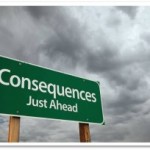 Who is it for?
Who is it for?
I’ve tried to use this to develop essay-writing skills and students’ reflection on their own essay writing at KS5. This is something to do at the end of a topic as you’re preparing to set students an essay.
Outline of idea
This is based on the old party game “Consequences”. Each student is given a piece of paper and starts by writing down a statement or point of view that might have been expressed at some point during the topic. For example, after a topic exploring the nature of God students may have started by writing “God is omniscient” or “God is eternal”.
Everyone then passes their paper to the person next to them who then writes a sentence or two in response to the initial statement. This could be a criticism of the previous comment, some further perspectives on the issue, teasing out the implications of what was said before. Students then fold over the paper so the original writing cannot be seen and pass the whole lot onto the next person.
The next student then writes a few sentences in response to the first response, folds the paper over and so on…
After the “essay” has been round 6 or 7 people (with each student responding just to the comments immediately beforehand) students unfold the entire piece of paper to reveal the sequence of arguments and comments.
Much amusement and discussion follows as people unpick the line of argument taken…
How it worked out
This exercise demonstrated two things that I wanted my students to get a grip on.
Firstly, the students aptly demonstrated a habit they often have of straying off the point. What started as a discussion of a particular issue quickly became nonsense about another problem altogether. When I observed that this kind of writing often happening in their own essays to a lesser degree they took the point well.
Secondly, the fact that different students responded to each other highlighted the importance of having a discursive element to essays in which points respond to one another in a logical progression rather than each being unconnected to what has come before it.
As a result of the exercise students took both points quite seriously.
Next steps
I might use this in other contexts as the “blind” nature of the activity managed to make links between aspects of the course that were previously not obvious.
Oct
24
1 comment
Neil Jones says:
February 6, 2013 at 3:39 pm (UTC 0 )
Thanks Rachel; very useful. And I’m only four months slow to reply!
I’ve used a similar exercise in a drama context (KS4, KS5), which I nicked from a playwright at the Birmingham Rep, when students have to devise plots. I make the point that a plot is a kind of argument, or a chain of consequences, or a joke with a punchline.
The not-blind version: students individually fold their piece of A4 into eight sections, working down the page vertically. They number each section 1-8. Firstly, in section 7, off the top of their head, they write down the climax: what happens? e.g., the girl is arrested. Next, they fill in something for section 6 and section 8 (cause and consequence of 7); then section 5; then section 1; then fill in the missing sections; peer assesment finally to see if this story / plot hangs together, and how it could be refined.
I like this approach to consecutive argument because it means you can jump in with your ‘gut’ conclusion first; then, though, you have to justify that conclusion logically, working backwards, qualifying, expanding… It should work with essay writing: will try it out.
Thanks again.